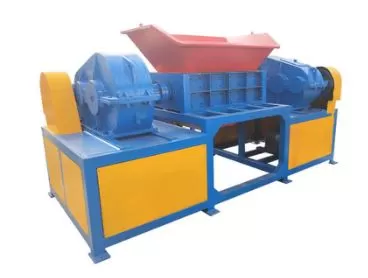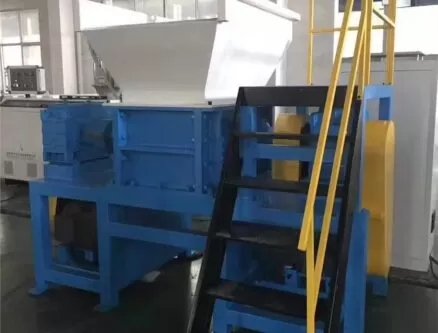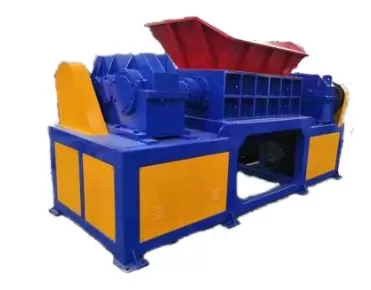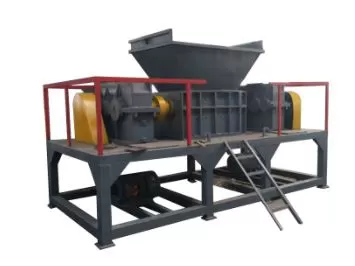We all want to live in a world with cleaner air, healthier oceans, and no plastic forests blooming behind our factories. But the road to environmental compliance isn’t always smooth. I’ve seen countless companies scramble to meet new eco-standards while still drowning in waste. One question I keep getting from manufacturers, regulators, and even eco-activists is this: Do plastic shredding machines help or hurt environmental regulation efforts?
Plastic shredding equipment plays a dual role—on one hand, it enhances regulatory compliance by enabling efficient waste management and material reuse; on the other, it poses challenges like energy consumption, microplastic release, and end-of-life handling of byproducts.
As the CEO of Amige, I’ve stood at the crossroad between machinery and policy more times than I can count. So let’s break it down with zero fluff and maximum clarity.

How do shredding machines support environmental regulations?
Let’s start with the good news.
Plastic shredding machines make waste traceable. Once a large plastic item is shredded, it can be weighed, labeled, and sent for reuse or pelletizing. That’s a win for accountability, which many governments now demand.
They also prevent illegal dumping. When plastic can be processed in-house, there’s less temptation to, well, “make it disappear.”
Here are the key benefits:
- Waste volume reduction – A 200-liter bin of plastic parts turns into a few kilos of flakes.
- Improved sorting and recycling rate – Shredded materials are easier to separate by polymer type and color.
- EPR compliance – Many countries require brands to prove how much plastic waste they reclaim. Shredders make the numbers real.
At Amige, we often customize machines with weighing modules and barcode integration, so our clients can generate regulation-friendly reports at the push of a button.
What challenges do shredders create for environmental oversight?
Now, here’s the messy bit.
For all their advantages, shredders can be regulatory headaches too. Why? Because even eco-tech comes with baggage.
Let’s start with energy consumption. A heavy-duty double-shaft shredder can eat 30–50 kWh per hour. That’s not small. If the factory runs on coal-fired electricity, your carbon footprint just spiked.
Another issue is microplastics. Improper shredding—especially of soft films—can generate dust and fine particles. These might escape into the air or water if you don’t use proper filtration systems.
And let’s not forget noise pollution. Shredding isn’t silent. A typical unit produces 80–100 dB. Regulations in urban areas may require soundproof enclosures, which can get costly.
Bottom line: even green machines need supervision.

Can shredders help with plastic traceability and auditing?
Yes—and this is where machines shine.
Every shredder at Amige can be paired with digital monitoring systems. These log the type, weight, and time of processing. When audited, our clients can provide clean data trails showing how much waste was shredded, when, and where it went.
This is especially useful under Extended Producer Responsibility (EPR) frameworks. Many countries, from Germany to India, now require companies to reclaim a portion of the plastic they release into the market.
We even had one client in Vietnam install RFID scanning before the shredder. That way, each bag of incoming waste was tagged and tracked from entry to exit. The result? Their inspection passed without a hiccup.
What regulations must shredder manufacturers comply with?
Good question. We, as machine makers, have our own homework.
Depending on the destination market, shredders must meet:
- CE standards (Europe) for electrical safety and emissions
- RoHS compliance to ensure no hazardous materials in the machine itself
- ISO 14001 guidelines for environmental management systems
- Noise and dust control limits under various local laws
Amige machines go through rigorous third-party testing before shipping. We’ve got entire manuals just for compliance documentation. Fun? No. Necessary? Absolutely.
And if you’re exporting machines, don’t forget customs requires material composition certificates for the blades and housing. Bureaucracy never sleeps.

Are there ways to make shredders more environmentally friendly?
Definitely. And we’re working on several fronts.
- Inverter-controlled motors – These optimize power usage based on load. Less waste = less power drawn.
- Closed-loop water systems – For wet shredding, we recycle the water and minimize discharge.
- Air filtration units – To capture microdust before it reaches your lungs (or the inspector’s).
Some of our clients even power their lines with solar arrays during peak daylight hours. That’s the dream setup: off-grid, off-peak, and on-point.
Still, you get what you pay for. An eco-optimized shredder setup might cost 15–20% more, but the savings on energy bills and regulatory fines? Priceless.
How can shredders integrate into a circular economy strategy?
Ah, the holy grail—closed-loop recycling.
A good shredder doesn’t just cut plastic. It turns it into resources. Clean flakes can go into:
- New products (injection molding, extrusion)
- Plastic lumber
- Filaments for 3D printing
- Feedstock for chemical recycling
And every time you reuse your own plastic, that’s one less kilogram bought or buried.
We’ve helped clients set up internal recycling loops that feed plastic waste from one department back into production. That’s when you see both the planet and your profit margins smile.
To make that work, though, your shredder has to produce uniform flakes, free of contamination. That’s where blade quality and screen design come in. (Yes, we obsess over blade angles at Amige.)

What’s the regulator’s role in this whole process?
They’re not just the “bad guys” with clipboards.
In fact, many governments are pushing grants and subsidies for companies that install certified shredding systems.
The key is to be transparent. Share your waste data. Invite auditors early. Involve your machine supplier (hello, that’s me) to explain the process.
We’ve even helped draft compliance plans and reports for customers who had no idea where to start. Trust me—no inspector wants to shut down a factory that’s trying.
Let’s be honest: machines won’t save the world on their own. But used right, they sure give us a fighting chance.
Conclusion
Plastic shredding machines support environmental regulation by improving traceability, reducing volume, and enabling circular economy goals. But they must be used wisely—because energy use, emissions, and byproducts still need careful control. The right machine, the right setup, and the right mindset? That’s where real change begins.
